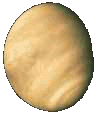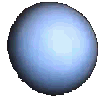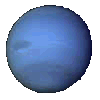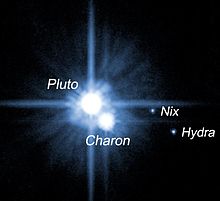|
| |
Classification of the Planets and Their Physical Properties
The planets of the modern solar system are grouped into several different and sometimes overlapping classifications, as illustrated
here:

 | The planets inside the orbit of the earth are called the Inferior
Planets: Mercury and Venus. |  | The planets outside the orbit of the earth are called the Superior
Planets: Mars, Jupiter, Saturn, Uranus, Neptune, and Pluto. |  | The planets inside the asteroid belt are termed the Inner Planets (or the Terrestrial Planets): Mercury, Venus, Earth, and Mars. |  | The planets outside the asteroid belt are termed the Outer
Planets: Jupiter, Saturn, Uranus, and Neptune. |  | |  | The planets sharing the gaseous structure of Jupiter are termed the Gas Giant (or
Jovian) Planets: Jupiter, Saturn, Uranus, and Neptune. |  | Dwarf Planets |
Acetazolamide uk is an overview of the history, mythology, and current
scientific knowledge of each of the planets and moons in our solar system. Each
page has text and images, some have sounds and movies, most provide references
to additional related information.
Physical Properties of the Planets
 |
MERCURY
Distance from the Sun:
Mean: 57.9 million km (0.387 astronomical units)
Max: 69.7 million km (0.467 a.u.)
Min: 45.9 million km (0.306 a.u.)
Sidereal period: 87.969 days
Synodic period: 115.88 days
Rotation period: 58.6461 days
Mean orbital velocity: 47.87 km/s
Axial inclination:
Diameter: 4878 km
|
Surface area: 7.475
x 107
Density, water = 1:5.44
Mass: 3.3 x 1026 g
Mass, Earth = 1:0.055
Volume, Earth = 1:0.056
Escape velocity: 4.25 km/s
Surface gravity, Earth = 1:0.38
Mean surface temperature:
Day +350°C
Night -170°C
Extremes of surface temperature:
Day +427°C
Night -183°C
|
 |
VENUS
Distance from the Sun:
Mean: 108.2 million km (0.723 a.u.)
Max: 109 million km (0.728 a.u.)
Min: 107.4 million km (0.718 a.u.)
Sidereal period: 224.701 days
Synodic period: 583.9 days
Rotation period: 243.16 days
Mean orbital velocity: 35.02 km/s
Axial inclination: 178 deg
Diameter: 12104 km
Density, water = 1:5.25
|
Mass: 4.870 x 1027
g
Mass, Earth = 1:0.815
Volume, Earth = 1: 0.86
Escape velocity: 10.36 km/s
Surface gravity, Earth = 1:0.903
Mean surface temperature:
Cloud tops -33°C
Surface +480°C |
 |
MARS
Distance from the Sun:
Mean: 227.94 million km (1.524 a.u.)
Max: 249.1 million km (1.666 a.u.)
Min: 206.7 million km (1.381 a.u.)
Sidereal period: 686.980 days
Synodic period: 779.9 days
Rotation period: 24 h 37 m 22.6 s
Mean orbital velocity: 24.1 km/s
Axial inclination: 23 deg 59 min
Diameter: 6794 km
Density, water = 1:3.94
|
Mass: 6.421 x 1026
g
Mass, Earth = 1:0.107
Volume, Earth = 1:0.150
Escape velocity: 5.03 km/s
Surface gravity, Earth = 1:0.380
Mean surface temperature: -23°C
|
 |
JUPITER
Distance from the Sun:
Mean: 778.34 million km (5.203 a.u.)
Max: 815.7 million km (5.455 a.u.)
Min: 740.9 million km (4.951 a.u.)
Sidereal period: 11.68 years
Synodic period: 398.9 days
Rotation period: 9 h 50 m 30 s
Mean orbital velocity: 13.06 km/s
Axial inclination: 3 deg 04 min
Diameter: 143884 km
Density, water = 1:1.33
|
Mass, Earth = 1:317.89
Volume, Earth = 1:1318.7
Escape velocity: 60.22 km/s
Surface gravity, Earth = 1:2.64
Mean surface temperature: -150°C |
 |
SATURN
Distance from the Sun:
Mean: 1427 million km (9.539 a.u.)
Max: 1507 million km (10.069 a.u.)
Min: 1347 million km (9.008 a.u.)
Sidereal period: 29.46 years
Mean synodic period: 378.1 days
Rotation period: 10 h 13 m 59 s
Mean orbital velocity: 9.6 km/s
Axial inclination: 26 deg 44 min
Diameter: 120536 km
Density, water = 1:0.71
|
Mass, Earth = 1:95.17
Volume, Earth = 1:744
Escape velocity: 32.26 km/s
Surface gravity, Earth = 1:1.16
Mean surface temperature: -180°C |
 |
URANUS
Distance from the Sun:
Mean: 2869.6 million km (19.181 a.u.)
Max: 3004 million km (20.088 a.u.)
Min: 2735 million km (18.275 a.u.)
Sidereal period: 84.01 years
Synodic period: 369.7 days
Rotation period: 17.24 hours
Mean orbital velocity: 6.90 km/s
Axial inclination: 98 deg
Diameter: 51118 km
Density, water = 1:1.27
|
Mass, Earth = 1:14.6
Volume, Earth = 1:67
Escape velocity: 22.5 km/s
Surface gravity, Earth = 1:1.17
Mean surface temperature: -214°C |
 |
NEPTUNE
Distance from the Sun:
Mean: 4496.7 million km (30.058 a.u.)
Max: 4537 million km (30.316 a.u.)
Min: 4456 million km (29.800 a.u.)
Sidereal period: 164.8 years
Synodic period: 367.5 days
Rotation period: 16.1 hours
Mean orbital velocity: 5.42 km/s
Axial inclination: 28 deg 48 min
Diameter: 50538 km
Density, water = 1:2.0643
|
Mass, Earth = 1:17.2
Volume, Earth = 1:57
Escape velocity: 23.9 km/s
Surface gravity, Earth = 1:1.2
Mean surface temperature:
-220°C |
| Pluto: |
|
|
 |
PLUTO (Dwarf Planet;
Trans-Neptunian Object; Plutoid; Kuiper Belt Object; Plutino)
Distance from the Sun:
Mean: 5900 million km (39.5 a.u.)
Max: 7375 million km (49.28 a.u.)
Min: 4425 million km (29.65 a.u.)
Sidereal period: 247.7 years
Tadalafil 40 Mg For Ed
3-5 stars based on
678 reviews
Tadalafil tablets usp 20 Tadalafil 120 Pills $218 - $199 Per pill mg once daily for 3 months
Ciclofen 10 mg once daily for 6 months
Cocoa 20 mg once every other day for 24 hours; decrease to 10 mg per day after 3 months
Prozac 10 mg/day for 6 months
Prostatectomy
This procedure is considered long-term surgery. Before deciding on your plan of action for post-op care, it's important you to discuss your general post-operative care goals with your surgeon and discuss the risks benefits of this surgical procedure with your surgeon.
Post-op therapy
Many men who undergo prostatectomy also need some post-op therapy. If the prostate problem has started after stopping any drug therapy, there may be a need for medications to suppress the prostate promote normal sexual function once the procedure is over.
Male sexual dysfunction
An enlarged prostate can affect any man's ability to have sex and be satisfied with sex. The enlarged prostate may cause erectile dysfunction. The prostate can enlarge if prostatic ducts become partially blocked and produce prostatic fluid. The fluid can cause your prostate to enlarge. These can be common signs and symptoms of prostatic hyperplasia.
Many factors may affect your ability to achieve and maintain a satisfactory erection with sex. Male sexual dysfunction may not be part of your condition. Having sexual difficulties with orgasm or difficulty using lubricants for sex is very common. If this present in your case, |
|